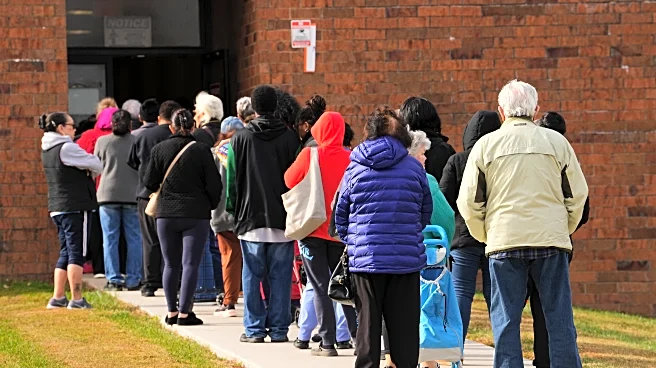What's Happening?
The Trump administration has instructed U.S. states to reduce the Supplemental Nutrition Assistance Program (SNAP) benefits to 65% of their usual amount. This directive follows a Supreme Court decision
allowing the administration to withhold some funding pending further legal hearings. The ongoing government shutdown has resulted in more than 42 million Americans receiving only partial food aid benefits this month. Some states had previously used their emergency funds to supplement SNAP benefits, but the U.S. Department of Agriculture has now mandated that states cease these efforts. SNAP, commonly known as food stamps, is a critical program for low-income families, costing nearly $9 billion monthly.
Why It's Important?
The reduction in SNAP benefits is significant as it affects millions of Americans who rely on this program for food security. The decision to cut benefits during the longest government shutdown in U.S. history exacerbates the challenges faced by low-income families. This move could lead to increased food insecurity and economic strain on households already struggling to make ends meet. The directive also places additional pressure on state governments, which may have to find alternative ways to support their residents. The broader impact on public policy and social welfare systems could be profound, as states navigate the complexities of federal funding limitations.
What's Next?
The situation remains fluid as legal proceedings continue. The Supreme Court's decision to allow the withholding of funds is temporary, pending further hearings. States may seek legal recourse or alternative funding solutions to mitigate the impact on their residents. Advocacy groups and civil society organizations are likely to increase their efforts to support affected families and push for policy changes. The outcome of the legal hearings will be crucial in determining the future of SNAP benefits and the government's role in providing food aid during shutdowns.












